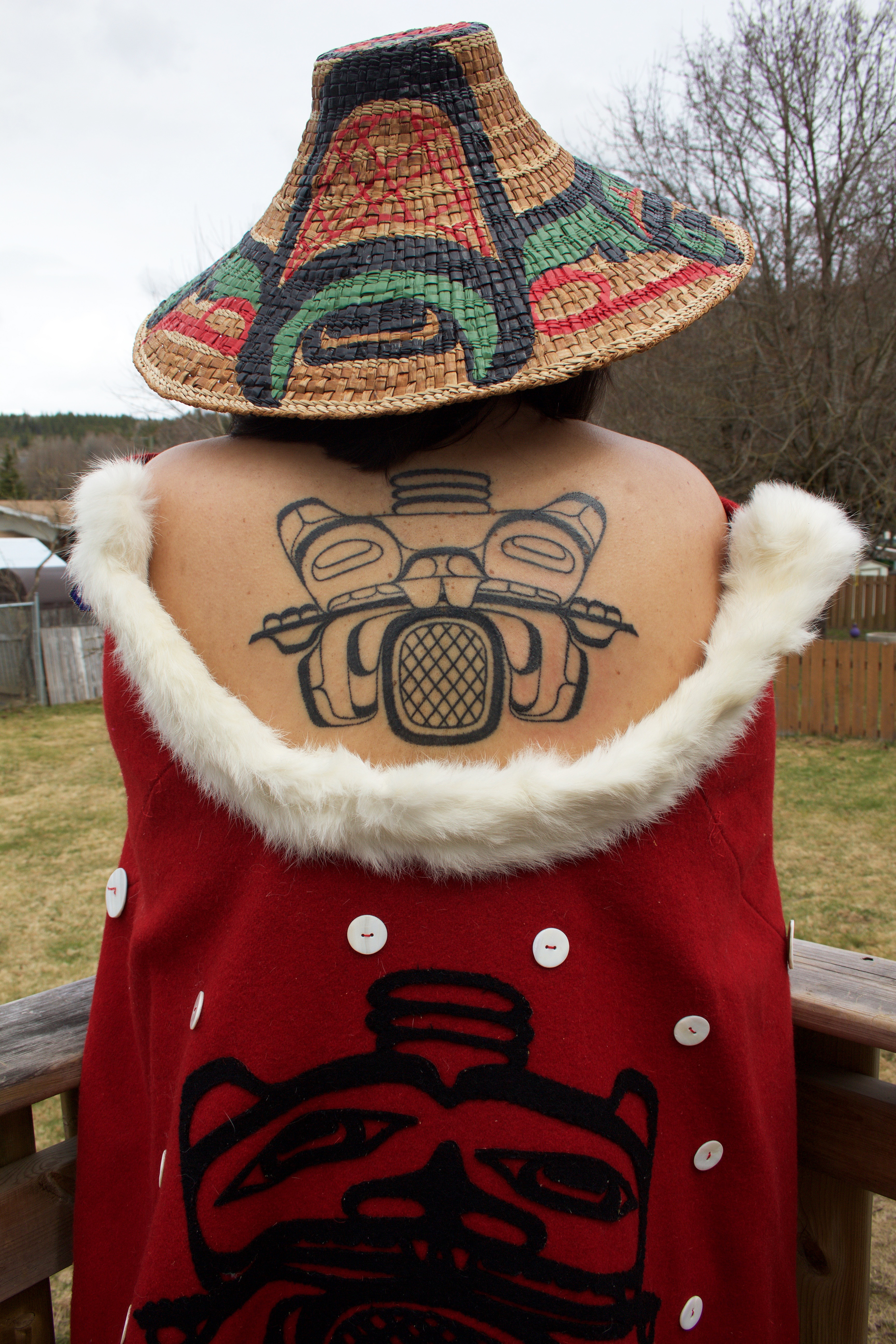"Body Language": The Skin Speaks In Tattoos
Review of Body Language at The Burke Museum
Written by Teen Writer Olivia Qi and edited by Disha Cattamanchi

After centuries of suppression, the Indigenous American art of tattooing is resurging. Native people are increasingly getting traditional tattoos that empower and connect them to their heritage; the exhibit Body Language at the Burke Museum of Natural History and Culture spotlights this movement. Body Language: Reawakening Cultural Tattooing of the Northwest is guest-curated by Dion Kaszas, a Nlaka'pamux cultural tattoo practitioner. The exhibit features tattooers from the Tlingit, Nisga’a, Naida, Heiltsuk, and Nlaka’pamux tribes. It effectively, albeit repetitively, teaches the viewer about tattoo art’s resilience and practitioners through photos, artifacts, and plenty of wall text.
Body Language is laid out to teach the viewer of the history of Native tattooing, before focusing on its significance in the modern age. The exhibit’s first section is hardly about tattoos—it’s about boarding schools, crests, potlatches, myths, and labret piercings. Pairing physical artifacts with photos and text, the exhibit paints a picture of the culturally rich and socially complex lives of Native people on the Northwest coast.
On a wall label, Kaszas states that “From the few threads of my culture that remain, I work as a cultural tattoo practitioner to stitch myself back together.” One of these threads is art, as Kaszas includes fine art and crafts throughout the exhibit to highlight how tattooing and other Native art influence each other. Dean Hunt’s painting Heiltsuk Body Suit 01 (2018) depicts a person covered with patterns from ancient Heiltsuk box designs. In another room are a collection of woven Nlaka’pamux baskets with the Morning Star Pattern placed next to a photo of Kaszas tattooing the pattern on someone’s stomach. Viewed alone, the art wouldn’t have had much of an impact on me because I wouldn’t know how to begin interpreting it. But it felt satisfying to trace connections between tattoos and their influences, since I hadn’t previously known where Native icons and symbols came from.

Body Language relies heavily on personal anecdotes, a whole room being dedicated to them. Yapese, Yup’ik, and Tlingit University of Washington students and Burke staff shared their experiences getting tattoos in long captions about how the tattoos empower them and connect them to their history. Tattoo artists Mel Lefebvre, Robin Humphrey, Amberley (Kaniyewna) John, and K’aajuu G’aaya (Greg Williams) wrote about their own tattooing philosophies and displayed photos of their work. Reading all the text felt repetitive after a while, since everyone’s writing pushed the same idea: tattoos = historical connection = identity = empowerment.
The sheer quantity of wall text in Body Language was the main drawback for me. I spent most of my time standing in front of captions that weren’t captions as much as they were thick paragraphs, cocking my head sideways to make out the small, rotated definitions of Indigenous words. They were somewhat illegible and left me confused when the word was used elsewhere in the exhibit. I recognize the importance of wall text in teaching viewers, but I wish I could have learned its information in a more interactive way, or just a way that didn't require so much reading.
A video in the exhibit avoided that issue, and I found it to be the most engaging part of the exhibit. It showed snippets of tattoo artists’ personal lives alongside clips of them talking about their work, and I enjoyed the glimpse into how their art ties into their lives. The video also brought up points that weren’t mentioned elsewhere in the exhibit. Haida tattoo artist K’aajuu G’aaya (Greg Williams) addressed whether or not non-Native people can get Indigenous tattoos and an Inuk woman shared how some other Indigenous people didn’t like her tattoo. When I left the museum, those were the takes that stuck with me the most.
Body Language shows that tattooing is more than skin-deep and from it, I learned about Native boarding schools, crafts, and modern tattooers’ personal philosophies about the art form. Though Body Language had too much wall text with content becoming a little repetitive, I enjoyed my visit and finished it with a new appreciation for Indigenous tattooing.
Body Language took place at The Burke Museum on November 6th, 2022 - April 16, 2023. For more information see here.
Lead Photo: Fists of the exhibit's five original co-curating artists, photographed in Whistler, BC during initial exhibit planning in 2017. Photo credit: Aaron Leon
The TeenTix Newsroom is a group of teen writers led by the Teen Editorial Staff. For each review, Newsroom writers work individually with a teen editor to polish their writing for publication. The Teen Editorial Staff is made up of 6 teens who curate the review portion of the TeenTix blog. More information about the Teen Editorial Staff can be found HERE.
The TeenTix Press Corps promotes critical thinking, communication, and information literacy through criticism and journalism practice for teens. For more information about the Press Corps program see HERE.

